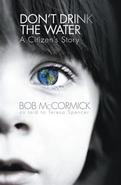BK Blog Post
The Power of a Story Is Not the Story
 Posted by
Anna Leinberger,
Editorial Manager, Acqusitions,
Berrett-Koehler Publishers Inc.
Posted by
Anna Leinberger,
Editorial Manager, Acqusitions,
Berrett-Koehler Publishers Inc.
Anna is a writer and editor for Berrett-Koehler in Oakland, CA. More on killer book proposals and writing can be found on her BK Blog.
A particular brand of personal storytelling has recently taken American pop culture by storm. This American Life, The Moth, StoryCorps, and countless other podcasts have popularized the spontaneous, first person narratives reference bigger truths and essential human experiences.
When asked what made a speaker’s presentation compelling, chances are that the answer will be something like “oh, it was the stories- the stories were so powerful.”
Perhaps understandably, everyone now wants to use stories to liven up speeches and writing. As usual in in this column, I am going to be contrarian and object. This is to say, any story’s power lies in the telling, not in the existing.
HOW not WHAT
Not all stories are created equal. Some stories inspire and teach and open hearts. Some stories bore you to tears. Even well-told stories, when not correctly contextualized, do more harm than good. A well-told story needs more than to demonstrate a lesson. It needs to come at the right moment in the text. It needs to be a focal point. It needs to make the point succinctly, and it should not have too many details.
Too many stories
Most people know that in teaching, a student needs to hear information multiple ways in order to learn a concept effectively. When writing a book or crafting a speech, writers often attempt this by telling multiple stories about the same concept. But the medium is not actually changing, and varying the medium is what helps someone learn. It may seem like telling two different stories about the same concept is the same as teaching something multiple ways, but in reality, it is just the same tactic repeated. It is far more effective to describe the concept, and then tell just one story to demonstrate it. When you tell your audience what you want them to learn, you build a framework in their mind. When they then hear the idea played out in the story, they have something to relate the story to- that is how you get the “ah ha” moment. Usually one story is sufficient to do this. Two examples is my maximum for any given concept, because at three, your reader gets bored and impatient.
One rule of thumb in a nonfiction book is to treat all stories like case studies. If you pull out all the stories and put them into call-out boxes and the text that you are left with is a fraction of the whole, you have too many. Readers will become fatigued when they hit story after story when they really just want the author to get to the point.
Too much Detail
Writers share an instinct- the desire to sweep the reader’s imagination away from the first line. Unfortunately, when a reader has picked up a book that promises to help them with productivity or office politics they are not looking to be “swept away.” They are looking for a quick and concrete value add. If you start with a drawn-out story that has too many details you will loose the reader’s attention fast. Even if you start telling the story at a strategically strong moment, if you throw in details that get in the way of your conclusion, a reader will get frustrated.
Remember your audience. What do your readers need? Stories should be facilitators, they should not be the primary delivery system. When writing non-fiction, it is still most effective to be clear, concise and give your reader exactly what they need directly..





